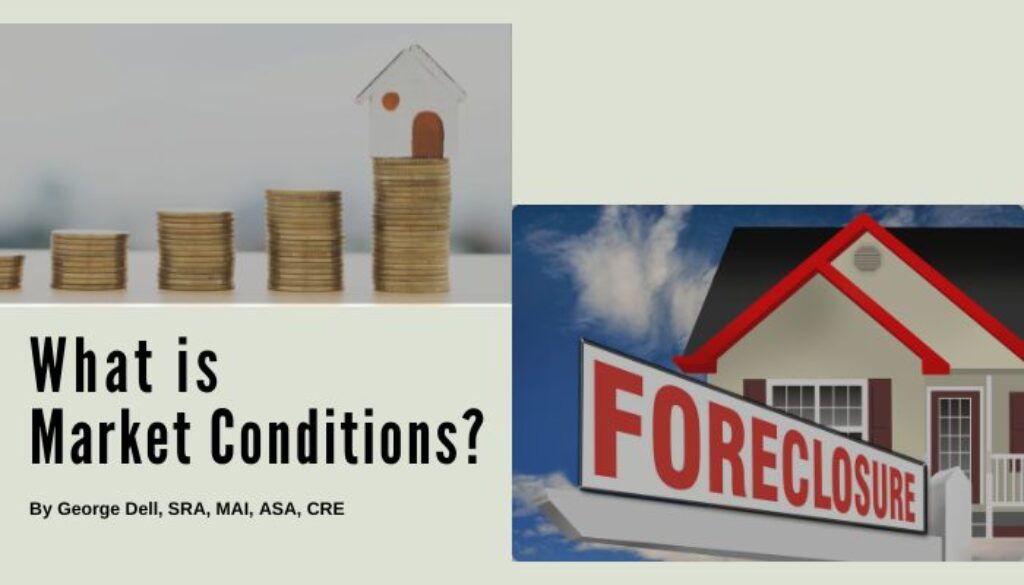The conditions of the market, in real estate, means the relationship between supply and demand.
Supply and demand issues (at a point in time) are particularly important for new construction. In such cases, forecasting may also be important where build-out and rent-up times affect value.
For existing properties, like houses, it seems much simpler, as everything is reflected in current and recent sales of similar properties. Simple. Whatever houses sell for is what they are worth. Simple.
Or is it?
Why do people buy a house? Well, of course, we all know the answer: a place to sleep, to eat, to raise children, help others, work (for some), have sex, and relax and entertain.
What else? Is there anything else?
We also know that sometimes people buy a house to “create wealth.” To get rich even. To get present use, plus future benefit! In fact, it could be said that property value is the sum of all present and future usefulness, which includes the value of the ‘terminal’ sale.
Appraisers are not generally interested in market conditions at a point in time (static conditions). They do not have future transactions to consider, so must use prior transactions. And those prior conditions will have been at different market conditions. So what appraisers (and evaluators and AVM’rs) do care about is the change in market conditions.
So what is important?
- What is “the market”?
- How far back do you go?
- How do you measure change?
These seem trivial, even obvious. But are they?
This blog is the first of at least four to answer these (and perhaps other) related questions.
For #1, it seems everyone knows what this means: “the market.” First, the general activity of a marketplace, often described as a neighborhood or “market area.” Second, “the market” is often referred to as the actual competitive sales. The equivocation (changed meaning) of these two descriptions (sadly) causes much misinformation and misplaced analytics – some of which is embedded in appraiser literature and education.
Modern analytics, founded in the science of data, requires clear and precise word meanings.
For #2, there is a tradeoff. If you analyze sales for too short a time period, there will be few sales, and there will be analytic bias from the (usual) lack of a sufficient ‘sample’. Too long a time period simply adds to issues of curve-fit – from other changes in the otherwise similar market segment.
For #3, the goal is a dollar “price adjustment” (price index), or predictive method recognizing the trend in prices in a particular market segment. While such trends are commonly measured as an annual percentage, for valuation work, the need may be different. The relevant time period is seldom exactly 12 months (one year). And the desired result is a dollar adjustment, not a percent adjustment.
The percent adjustment seems to better fill human emotional needs, while the dollar adjustment is clearer as to its impact. Converting from one to the other is simple — multiply or divide.

March 9, 2022 @ 7:58 am
Trends in market value and product demand have been shown to follow trends in effective demand as it relates to the cost of funds. The surplus wealth that is not needed for daily needs can be likened to a pizza. The bigger the slice the lender wants will result in a smaller portion of the pizza pie that could be used to purchase a long-term investment. I did a 20-year study of the selling prices of the neighboring cities of Upland and Claremont. A direct correlation was produced vis-a-vis the cost of funds and the selling price of a home. Oh yes, and Upland was for those who couldn’t afford Claremont.